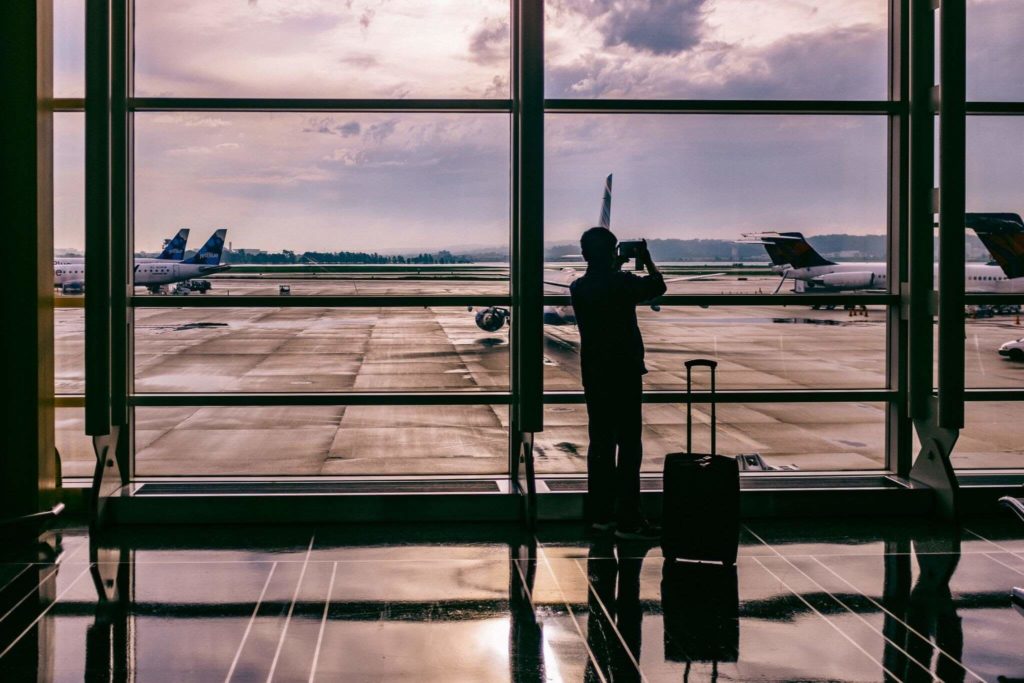Each year, the U.S. opens its borders to over 300,000 foreign nationals via the J-1 Exchange Visitor Program. Many of these visa-holders are foreign medical graduates pursuing a post-graduate training opportunity on U.S. soil.
Are you an aspiring physician with a J-1 visa?
Do you know when your J-1 expires?
How about what the J-1 renewal process looks like?
If you plan to extend your stay or continue practicing medicine in the U.S., you should definitely know the answers to these questions! Not renewing or extending your visa on time could land you in hot water and even count as “unlawful residence.”
This guide is designed to help physicians understand more about J-1 visa renewals.
Table of Contents
What Is a J-1 Visa?
The U.S. J-1 visa falls into the temporary nonimmigrant visa category.
Often called an “exchange visitor” visa, this stamp allows foreign visitors entry into the U.S. to pursue professional and educational goals, including:
- International students (particularly medical students receiving post-graduate education or training)
- Research assistants
- Research scholars
- Trainees
- Medical specialists and physicians
- Teachers and professors
The J-1 visitor exchange program opens up once-in-a-lifetime opportunities for scholars from more than 200 countries.
J-1 visa-holders also receive a Form DS-2019 detailing their stay’s start and end dates and information about their program and sponsor. The information on this form is perhaps more critical than the visa itself.
And, the visa’s “clock” begins ticking the moment you set foot on U.S. soil.
When Do J-1 Visas Expire?
As long as your DS-2019s end date hasn’t passed, your J-1 visa can expire while you’re still in America without impacting your legal immigration status.
As you might expect, DS-2019s do have strict start and end dates, though there is some flexibility depending on your chosen pathway (why you’re coming to America).
For example, J-1s for youth camp counselors cap out at around four months. Meanwhile, government visitors can remain in the country for up to a year and a half before they must leave.
As a doctor, medical school professor, or physician-in-training, any of the following maximum expiration dates may apply:
- International visitors (cultural exchange): 1 year
- Scholars and professors: 5 years
- Foreign medical graduates: 7 years
The end date is typically your program’s end date.
What Happens When Your DS-2019 Expires?
The U.S. gives you some leeway between when your DS-2019 expires and when you have to return home. There’s a strict 30-day “grace period” for J-1 scholars to depart.
Many physicians use these 30 days to get their affairs in order, schedule a flight, and get a headstart on the renewal process.
But more adventurous grads often use this month-long span for sightseeing and exploring the country.
If you exit America during the grace period, you cannot re-enter for the same reason unless you have a valid J-1 visa in hand. You also can’t continue your studies or training after the official end date on your DS-2019.
Your DS-2019 Is About to Expire: Now What?
Not all J-1 visa-holders will seek renewal or extension at all. Instead, they’ll return to their home countries to begin or continue their medical practice.
But if you do intend to remain in the U.S. for longer, time is of the essence.
Allowing your DS-2019 to expire will typically subject you to America’s “two-year home-country physical presence” requirement.
In other words, you’ll have to wait out a two-year period — where you must reside in your home country — before you can return to the country on another visa.
You can then return to the U.S. on a green card (immigrant) or H (temporary worker) visa. We’ll talk more about your other re-entry options later.
But if your J-1 visa needs renewal, you have three options:
Pursue a J-1 Visa Waiver
There are exceptions to the two-year rules, such as if returning home isn’t feasible or could do more harm than good.
The U.S. Citizenship and Immigration Services (USCIS) may allow a J-1 visa waiver for medical professionals if you meet one of the following criteria:
- A federal government agency is requesting you stay (i.e., you’re planning to practice in an underserved area of the U.S. or a region with a noted physician shortage)
- Returning to your country puts you at risk for persecution due to race, religion, etc.
- Leaving the U.S. would cause substantial hardship to another U.S. citizen, such as dependents or a spouse
- A state public health department can offer you full-time employment in healthcare that begins within 90 days, lasts longer than three years, and requires you to work 40+ hours per week (Conrad State 30)
Unfortunately, the U.S. no longer accepts the “no object statement” for those pursuing medical training or education. That means your country’s Washington D.C. embassy can no longer override the two-year requirement.
Further reading: How to File a J-1 Waiver as a Physician
Extend Your DS-2019
In rare cases, the U.S. may approve a DS-2019 extension if your original form didn’t exceed the upper limits.
So a medical graduate on a three-year J-1 could extend their stay another four years to continue their training (or longer if you can justify it to the Department of State).
These extensions are also a time-sensitive matter. If you’re subject to the two-year rule, you may not be eligible for a DS-2019 extension at all.
To extend your DS-2019 beyond its original end date:
Request an Extension
The first step is requesting a visa extension from your sponsor organization as soon as possible and at least ten days before your DS-2019’s written expiration date. Visa extensions typically take ten business days to process.
You may also apply for an extension if you’re an ECFMG-sponsored visa-holder scheduled to sit for an American Board of Medical Specialties (ABMS) examination.
There are limitations to this route, however:
- You cannot extend your DS-2019 longer than six months post-expiration.
- This extension does not allow you to continue training in the U.S.
- Your DS-2019 will expire on the final day of your exam month.
The ECFMG lays out the examination extension and registration process here.
Submit the Requested Documentation
As your program sponsor completes a brand new DS-2019 for you, you’ll need to provide them with the following documents:
- An explanation for your extension request
- Form I-94
- Form DS-2019
- Proof of health insurance extending through your new expiration date
- Form IAP-66
- A valid passport
- Proof of proper funding to cover tuition and other expenses
Unlike your original J-1 visa application, there is no $400 SEVIS fee for extensions. However, your sponsor may charge you a $400 extension fee.
Wait for Approval
You should hear back from your program sponsor’s officer within ten business days. If you’re approved, you’ll receive an updated DS-2019 form that reflects the new end date. This extension does not extend your visa stamp, meaning international travel is off the table.
Renew Your J-1 Visa (Apply for a New One)
The J-1 visa renewal process requires the same steps as those you followed during the initial application and approval.
To secure a new visa without changing your immigration status:
Apply From Your Home Country
Any U.S. consulate or embassy can process your J-1 visa application. But to increase your odds of approval, the U.S. Department of State recommends doing so from the one in your home country.
If you’re a “Third Country National” or from a country designated as a state sponsor of terrorism, you may be able to apply from another country as long as it isn’t along the U.S. border (i.e., Canada or Mexico).
You may also be subject to additional security clearances.
Complete Your Application (Form DS-160)
You can complete the official application (Form DS-160) via the DOS’s online portal. Don’t forget to print out your confirmation page; you’ll need to bring this with you for your visa interview.
The form will also ask you to upload a current photograph of yourself. While this might sound simple, you should familiarize yourself with the official guidelines first.
The U.S. embassy can and does reject photos. If you’re wearing a hat or glasses or your photo doesn’t have a white backdrop, you’re likely to receive a rejection letter.
Schedule an Interview
The embassy or consulate will often require a visa interview, though some renewal applicants may be eligible to skip this step. The interview wait time could be a day, 200 days, or closed indefinitely barring emergencies.
You may also be on the hook for an application fee — often $160 — before you can schedule an appointment.
Collect Your Documentation
It could take weeks or months to secure an in-person visa interview. The worst-case scenario is showing up without all of the required paperwork and delaying your J-1 approval even further.
Bring the following documents with you to your visa interview:
- Receipt from your application fee payment (if applicable)
- Printed photo of yourself if you could not upload one
- Confirmation page from your online Form DS-160
- Valid passport
- Form DS-2019 (Certificate of Eligibility for Exchange Visitor Status) from your program sponsor with an updated travel signature
- Evidence that you can support yourself while in the U.S.
- An offer letter or letter of enrollment verification
The U.S. also requires separate applications and DS-2019s for J-2 dependents like spouses and minor children.
Attend Your Visa Interview
Though you hold a current J-1 visa, the approval process isn’t always as simple as you might imagine.
For one, the J-1 visa is a “nonimmigrant visa.” So be ready to explain to your interviewer that you don’t plan to immigrate to the U.S.
Passing security clearances could add another 20 business days to the process. The administrative processing time may take an additional 60 days, impacting those who apply for renewal outside of their home country. You might also have to wait until the consulate returns your passport via mail.
Wait For Visa Approval
The best way to avoid delays is to start this process early. It could take 30–120 days to receive your approval or rejection.
Prepare For Re-Entry
Once the embassy approves your visa renewal, you’re eligible for re-entry at any U.S. port of entry. Make sure you bring all travel documents, including your approved visa and your passport.
J-1 Visa Renewal Timeline
The typical J-1 visa renewal process could take a few business days or several months (up to 120 days).
Many programs and sponsors recommend beginning the renewal process at least six months before your U.S. visa ends and before you leave America.
Other Visa Pathways Post-J-1
Right now, it may seem like you have two options available to you:
Extend/renew your J-1 visa or allow your visa and DS-2019 to expire and return to your home country for two years.
If you face the two-year home-country requirement, you aren’t eligible to transfer your visa status to permanent residency.
However, there are other nonimmigrant visa pathways you can pursue after you wait out the mandatory two-year period:
Green Card
In rare cases, J-1 visa-holders can apply for a green card. But, you’ll have to prove that your original intentions were always to return to your home country.
This process can also create a ripple effect, leaving many program sponsors to revoke sponsorships while also potentially harming your chances of immigrating to the U.S. down the line.
H Status
The H-1B is one of the most common “next steps” for those with J-1 visas. Transferring from J-1 status to H-1B status would require you to find an employer — not a program — sponsor.
With an H-1B, you may extend your stay for three to six years, and you could eventually be able to apply for permanent residency.
Conclusion
Once your visa stamps and DS-2019 expires, you’ll need to renew your J-1 visa, return to your home country for two years, or apply for a J-1 waiver.
The best way to avoid any hiccups or future visa issues is to apply for a program extension or renewal as soon as you know you’ll need to remain in the U.S. for longer.
Subscribe to our email newsletter for expert tips about finances, insurance, employment contracts, and more!








































